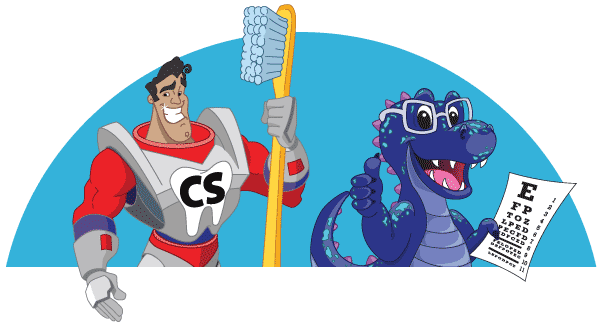
How Baby Teeth Erupt and Fall Out
As parents, it is essential to understand the process of how children's teeth erupt and fall out. The development of primary teeth, also known as baby teeth, plays a crucial role in a child's oral health. By understanding this process, parents can effectively care for their children's teeth and ensure proper dental hygiene from an early age. In this article, we will explore the stages of tooth eruption and shedding in children.
The Process of Baby Teeth Eruption
Tooth eruption refers to the process by which teeth break through the gums and become visible in the mouth. The eruption of primary teeth typically begins around the age of six months, although it can vary from child to child. The process continues until the age of two to three years, when all 20 primary teeth have erupted.
1. The Incisors:
The first teeth to emerge are usually the lower central incisors, followed by the upper central incisors. These front teeth are vital for biting and cutting food.
2. The Lateral Incisors:
The next set of teeth to erupt are the lateral incisors, located next to the central incisors. They usually appear between eight to twelve months of age.
3. The First Molars:
Around the age of one year, the first molars begin to erupt. These teeth are located at the back of the mouth and help with grinding food.
4. The Canines:
Canines, also known as cuspids, typically emerge between the ages of sixteen to twenty months. These teeth are sharp and pointy and aid in tearing food.
5. The Second Molars:
Finally, between the ages of two to three years, the second molars erupt. These molars are located at the back of the mouth, completing the primary dentition.
The Process of Losing Baby Teeth
Once the primary teeth have fully erupted, they serve their purpose in helping children chew and speak properly. However, as children grow, these teeth eventually fall out to make room for permanent teeth. The process of primary tooth shedding, also known as exfoliation, generally begins around the age of six and continues until the early teenage years.
1. Root Resorption:
Before a tooth falls out, a process called root resorption takes place. The roots of the primary teeth start to dissolve gradually, allowing the permanent teeth to push them out.
2. Loosening of Teeth:
As the roots resorb, the primary teeth become loose. Children may notice wiggling or movement of their teeth, which can sometimes cause discomfort or mild pain. This stage is a natural part of the process and should not be a cause for concern.
3. Permanent Teeth Eruption:
Children will sometimes lose their front two bottom teeth or primary incisors first, or sometimes the first permanent or 'six year' molars also erupt posterior - in the back of the mouth at the same time before or after the incisors. These molars appear way in the back of the mouth behind the baby teeth. They are nonsucceedaneous teeth, or do not take the place of a baby tooth but erupt distally to them. It’s important to note that they are very susceptible to decay because parents are often unaware of their eruption because they expect their child to lose teeth prior to eruption and so they often don't get the attention they need.
4. Tooth Loss:
As the permanent teeth continue to emerge, the roots of the primary teeth eventually dissolve completely. At this point, the primary teeth become very loose and fall out, making way for the underlying permanent teeth.
Some parents tell their kids not to wiggle loose teeth because it will make the permanent teeth not line up correctly. When the primary tooth roots start to resorb, Dr. Ryan Smiley encourages kids to 'wash, wiggle, wash' - wash their hands, wiggle the loose teeth, and wash their hands again (or wiggle with their tongue) so that the primary tooth is not retained which is often more of a problem and CAN actually create an abscess, crowding or an ectopic eruption of the permanent tooth.
5. Replacement with Permanent Teeth:
Once a primary tooth has fallen out, the permanent tooth takes its place. Unlike primary teeth, permanent teeth are designed to last a lifetime, emphasizing the importance of proper dental care and oral hygiene.
Tips for Promoting Healthy Tooth Eruption and Shedding
1. Oral Hygiene:
Start practicing good oral hygiene habits as soon as the first tooth appears. Clean the teeth gently with a soft-bristled toothbrush and a smear of fluoride toothpaste.
2. Regular Dental Check-ups:
Schedule regular pediatric dental visits for your child, starting from their first birthday or when their first tooth appears. Regular check-ups allow the dentist to monitor tooth eruption, identify any potential problems.
If you have questions about your child’s baby teeth, please contact one of our locations for more information.
California
Kids & Teen Dental Place - Glendale, Huntington Park, Los Angeles, Van Nuys
Colorado
Adventure Dental - Aurora, Denver, Commerce City, Greeley, Lakewood, Longmont
Academy Kids - Colorado Springs, Pueblo
Kansas
Adventure Dental Dental - Kansas City, Topeka, Wichita
Maryland
Adventure Dental - Baltimore, Essex, Landover Hills
New Mexico
Adventure Dental Dental - Albuquerque, Santa Fe
Oklahoma
Adventure Dental Dental - Midwest City
Pediatric Dental Group - Tulsa
Washington DC
Adventure Dental - DC, Landover Hills

